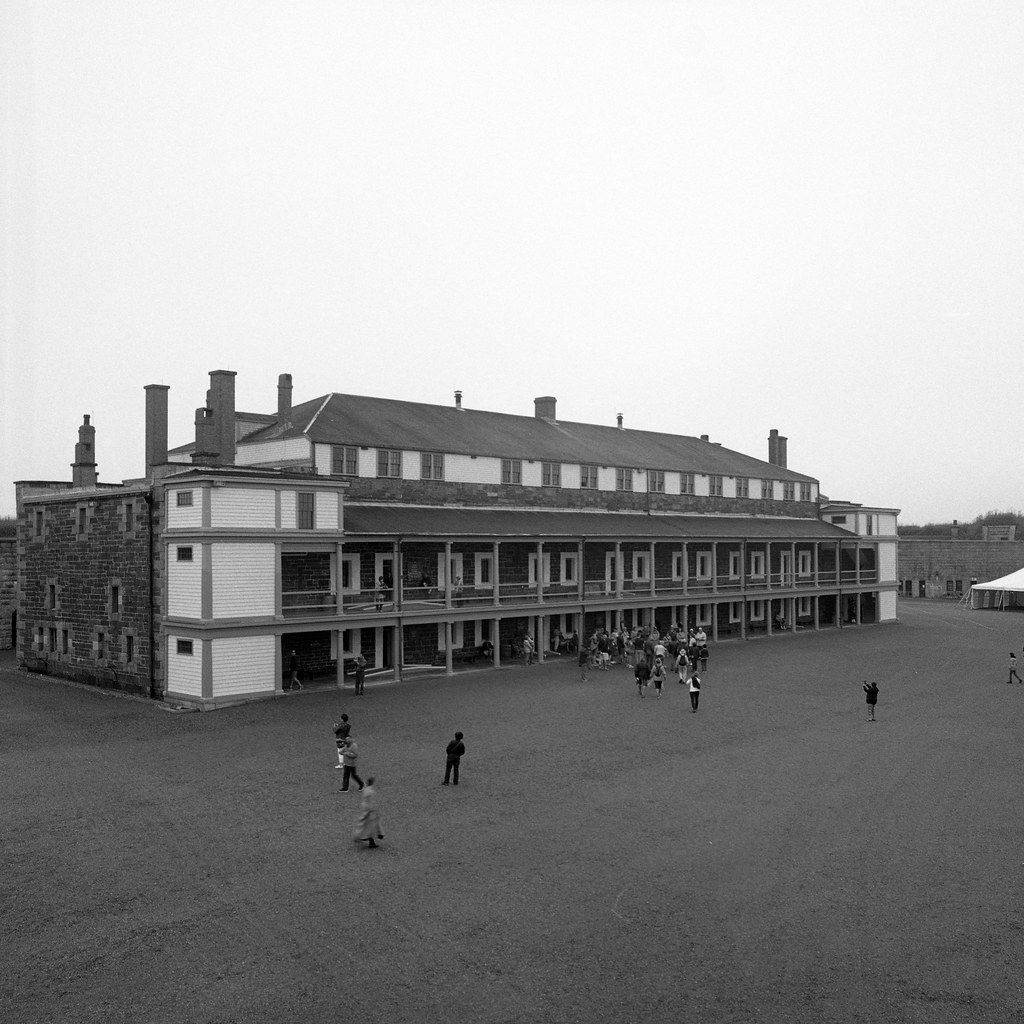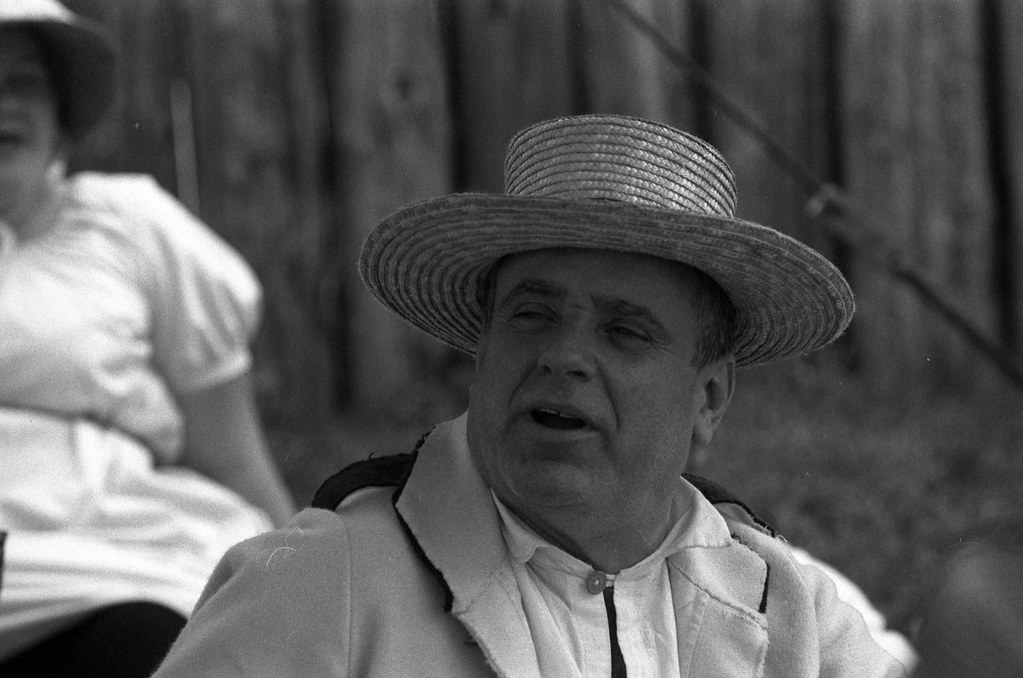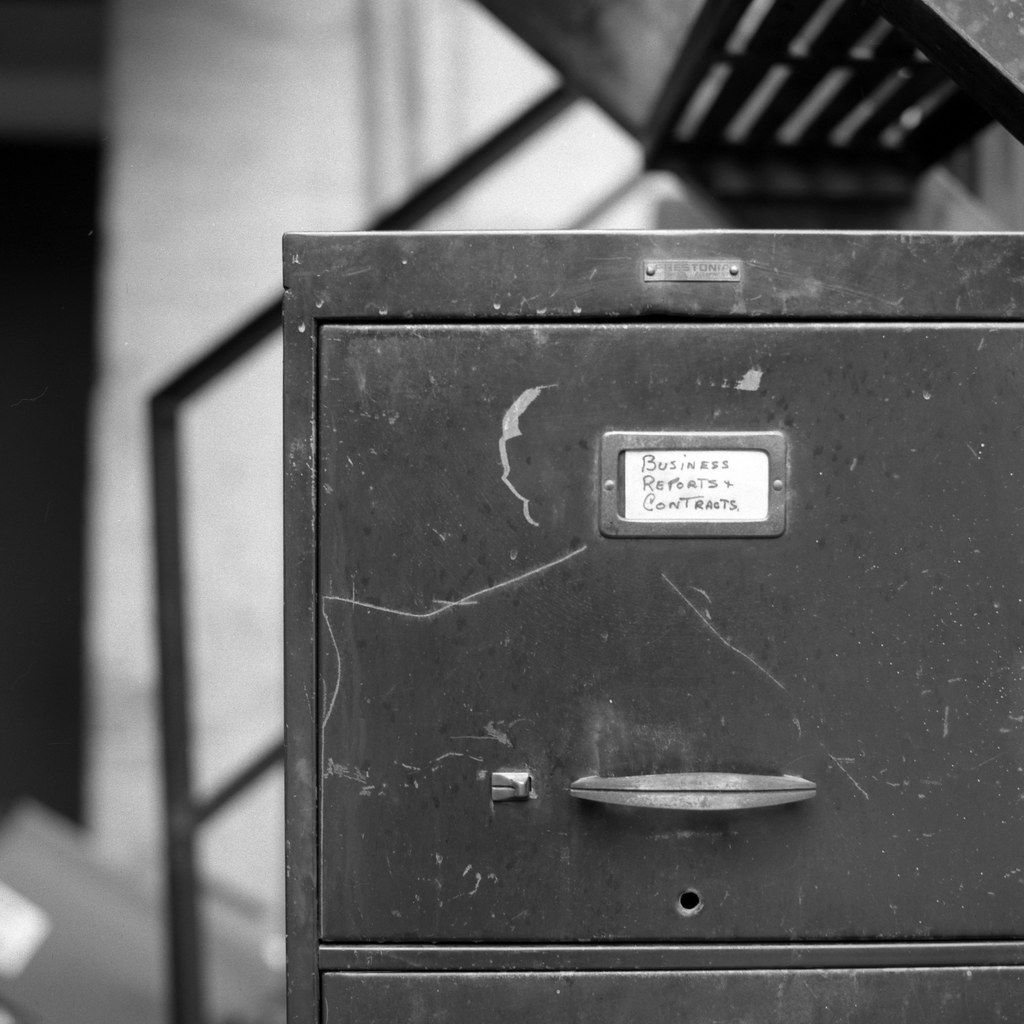Do you know that Kodak D-76 has a cousin? Although in the grand timeline of things, I can’t place exactly when the stuff was first released. But if I had to hazard a guess it was sometime in the 1920s. It proved to be a favourite of Ansel Adams along with HC-110. Today Kodak no longer produces D-23 in favourite of the far more shelf-stable D-76, but you can still mix it up from raw chemistry if you know the formula (I’ll be sharing that later) or you can purchase pre-made kits. Personally, I enjoy working with D-23 when I need some compensating capabilities and the need to tame contrasty film. It also provides a classic look to many films especially those with the traditional cubic grain. Plus it helps make Fomapan 400 look good, so it can’t be a bad developer if it can that!

Hasselblad 500c – Carl Zeiss Planar 80mm 1:2.8 – Ilford FP4+ @ ASA-100 – Kodak D-23 (Stock) 6:00 @ 20C
Technical Details
Manufacture: Kodak
Name: D-23
Primary Developer: Metol
Type: Reusable/One-Shot
Mix From: Powder


Handling
If you can mix up any powder-based developer then D-23 will be just as easy. Now, these days Kodak D-23 is not commercially available through Kodak, but that doesn’t mean you cannot purchase the powder to make it up. Photographer’s Formulary Developer 23 is Kodak D-23, and is available in multiple sizes. It’s best to store the stock solution in a brown plastic or amber glass bottle that can be kept airtight. Don’t expect the same shelf-life as D-76, but it’s pretty close. I’ve found that 1L of the stock solution will develop up to 10 rolls of 35mm film. And this is the kit that got me into working with D-23, and in full disclosure, I have never actually found or used OG Kodak D-23. If you’re the adventurous type, you don’t need to go with the pre-mixed package from Formulary. I actually mix up my own D-23 from raw chemistry for two reasons. The first being that it only has two chemicals, second it’s cheaper overall. To mix up your own D-23 you will need a diet scale or a scale that is accurate to a tenth of a gram. To mix fill a cylinder with 750 mL of water at 125°F (52°C), then add 7.5g of Metol, stir until dissolved, then add 100g of Sodium Sulfite (Anhydrous), continue to stir, then top up to 1000mL with water.




Applications
Like D-76, D-23 was Kodak’s first general-purpose fast working developer. And before D-76 it was exactly that, and while you can use D-23 as a general-purpose developer, I prefer to use it for more specialised applications in my photography. I’ll tend to drift towards D-23 if I need to tame the contrast with certain films, it works wonders with TMax 100 and Fomapan 400. The second reason is that it gives a far more classic look to the images. Especially if you’re using it with traditional cubic grained films. The downside is a few cases is that you do lose a bit of speed, for example with Ilford FP4+ you’re exposing at ASA-100, not a huge loss. But with Fomapan 400, you’re down just under a stop at ASA-250, also not a huge loss for Fomapan 400 which I tend to prefer shot around the ASA-200 range. And it makes Fomapan 400 look good, that 1970s Tri-X look through and through. But you can get full box speed with Tri-X, Fomapan 400, and TMax 100. And it doesn’t seem to matter on T-Grain/Delta films, it does wonders with OG Fuji Acros 100.




Qualities
As I’ve alluded to in previous statements Kodak D-23 is not a developer you pick up if you’re wanting a lot of contrast. And frankly, it’s one the reasons I like it so much. D-23 will knock back any inherent contrast in your film, and it does that throughout all film stocks. I’ve seen it work wonders with Fuji Acros 100, Kodak Tri-X, and especially with TMax 100. While you do still get excellent blacks and whites, the mid-tones are super smooth and give you every shade of grey across the spectrum. When it comes to film grain and sharpness, D-23 is fairly neutral, neither increasing or decreasing either. So if you’re working with sharp films, they will remain sharp, if you get a lot of grain, that will stick around also. However, for grainier films, you’re often pulling the film back about a stop, so you’re reducing the grain already. In fact, I find that with Fomapan 400 the grain looks better even with 35mm. As a semi-compensating developer if you’re an active user of the Zone system, D-23 will be an excellent choice of developer. And it works well with all film formats, from 35mm up to large format sheets.




Lowdown
I will always be happy to promote the benefits of working with D-23. If you do a lot of shooting and want to achieve a classic look, then D-23 is the developer you want, paired with a film like Fomapan 100, 400, or Ilford FP4+, your images will achieve that classic look in no time. And while it hasn’t been in Kodak’s catalogue for decades now, Photographer’s Formulary has their own version up for sale, I linked to the page earlier in this post. You’ll pay for a premade kit between 12$ USD for one-litre up to 20$ USD for a four-litre kit. And again, you can always buy the raw chemistry to mix it up yourself making it slightly less expensive. The Massive Dev Chart still lists D-23 times for most films out there. However, if the film you have doesn’t have a D-23 time, take the D-76 times and add 10% to the time. An example is Efke 100 which has D-76 (Stock) times at 7 minutes, add 10% you get 7.7, which I evened out to 7:45. I will warn against using an OG D-23 you find laying around, these were mostly stored in cans which can and do rust. If the can is in pristine shape, by all means, mix it up and try it out. But you’ll probably want to test it on a throw-away roll first.




Recommended Reading
Don’t just take my word on Kodak D-23 check out these other blogs on the subject!
Tim Layton Fine Art – Exploring Metol Developing Agent and The Historic D-23 Developer Formula
Milly’s Cameras – Kodak D-23 Developer
Peter Lee Photography – Kodak D-23 Developer for Large Format
You’ve given us such valuable information about a time-honored developer, Kodak D-23, and the films that are best suited for it. How does Ilford HP5 look developed in D-23? Will there be enough image contrast? Thanks.
HP5+ looks good! Doesn’t do much to drop the contrast.
D-23 was introduced in 1944, according to “The Film Developing Cookbook”. It recommends to develop longer to get better contrast.
Oh wow! Thank you, I’ve been waiting for that info for a while. It’s a lot younger than I expected.